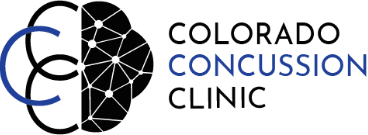Concussions are rehabilitative injuries. Gone are the days of resting until symptoms subside! As we have discussed previously, rest beyond the first couple of days following a concussion can be detrimental to long term recovery. There can be many symptoms following a concussion that affect different systems. These symptoms can include: dizziness, lightheadedness, balance impairments, headache, neck pain, fatigue, blurry vision, nausea, and eye fatigue. A physical therapist with specialized training in concussion can evaluate these symptoms and develop a treatment plan to assist patients with a more timely recovery.
It’s important to note that following a concussion, a multi-disciplinary team approach is best for providing comprehensive care. This team may include medical doctors, neurologists, physical therapists, neuro-optometrists, speech therapists, psychologists, athletic trainers, and others. For the purposes of this blog post, we will focus on the role of PT in concussion rehab.
There are multiple systems in our bodies which can contribute to physical post-concussive symptoms: the cervical spine, vestibular and oculomotor systems, and the physiological system. Since one or more systems can drive symptoms, a thorough PT evaluation should include an assessment of each of these areas to identify all possible sources of dysfunction. For example, dizziness can be caused by impairment in any of these four areas, and treatment of just one area may not alleviate the dizziness.
Cervical spine: Dysfunction of the neck often goes hand in hand with concussion. If a person sustains a force great enough to cause a concussion, they likely have also sustained a cervical injury. This may or may not present as neck pain. Impairment of the cervical spine can contribute to headaches, dizziness, and visual impairment. Even if a person does not have neck pain, the cervical spine may still be driving their overall symptom presentation.
Vestibular system: Located in the inner ear, this system gives us information about where we are in space, our relation to gravity, if we are still or moving, and it plays a large role in our balance and stability. It also impacts movements of our eyes. Dysfunction of the vestibular system can present as dizziness, vertigo, lightheadedness, visual issues, headache, imbalance, nausea, and motion sensitivity.
Oculomotor system: Visual changes following concussion are common and can include difficulty focusing the eyes, blurry vision, double vision, difficulty reading, sensitivity to screens (computer, phone, TV), and eye fatigue. Visual issues can contribute to dizziness, headache, and neck pain. A trained physical therapist can screen for visual issues, provide exercises as appropriate, and refer patients to specialty providers as needed.
Physiological system: A concussion causes metabolic and physiologic changes which can impact the function of the autonomic nervous system. This can lead to impaired blood flow and exercise intolerance, and it may drive or contribute to headache, nausea, and dizziness, among other symptoms. A trained PT or athletic trainer can administer a treadmill test to identify physiological dysfunction and design an individualized, sub-maximal exercise program to treat the symptoms.
A solid evaluation of all of these areas is essential to determining the priorities in a treatment approach. A concussion is not a “wait and see” injury! If you are not feeling right following a concussion, there is a lot that can be done from a rehabilitation perspective to speed the recovery process. Physical therapists with specialized training in concussion are often a good entry point into the medical care system as they may be more accessible than other medical professionals, and early treatment is key to long term recovery.
- Kate Smulligan

